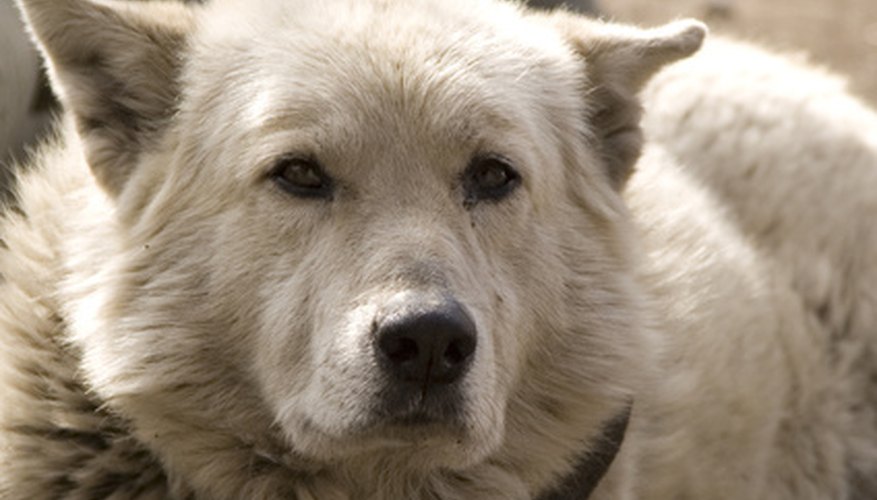Hernias can occur in dogs due to a variety of medical issues. From genetics to trauma, a hernia can be a problem that requires surgery to repair. For pregnant dogs especially, the risks can be greater and puppies can be in harm’s way.
Features
When tissue or an organ becomes inflamed, it can create a tear in the muscular walls. The tissue or organ pushes through the tear, causing a bulge; the bulging mass then is protected only by the skin. This is a hernia. What begins as a simple hernia sometimes develops into a strangulated hernia. This happens when the abdominal wall cuts off blood to the protruding organ, and can lead to gangrene or tissue death, called necrosis. Hernias can be aggravated by pregnancy in dogs - what starts out as a small hernia can grow as the pregnancy progresses. The larger the hernia, the more likely the dog's life may be in danger.
- When tissue or an organ becomes inflamed, it can create a tear in the muscular walls.
- The tissue or organ pushes through the tear, causing a bulge; the bulging mass then is protected only by the skin.
Umbilical and Inguinal Hernias
Two common types of hernias in dogs include umbilical and inguinal hernias. Umbilical hernias form over the animal’s belly button and are made up of soft, fatty tissue. Inguinal hernias occur in pregnant animals and are caused by a gap between the abdominal wall and the muscles of the hind legs. Like umbilical hernias, they are frequently made up of fatty tissue, but there is a risk of the intestinal wall moving through the tear. A small umbilical hernia is not usually life threatening to pregnant dogs, but the bigger the hernia, the greater the dangers. Inguinal hernias are often life-threatening.
- Two common types of hernias in dogs include umbilical and inguinal hernias.
- Umbilical hernias form over the animal’s belly button and are made up of soft, fatty tissue.
Treatment
The only way to treat a hernia is with surgery. Most veterinarians will spay or neuter the dog at the same time in order to prevent further complications; since the animal is already anaesthetised, it is much easier to perform both surgeries at once. In pregnant dogs, vets typically will remove the pregnancy during the course of repairing the hernia and spaying the animal. For the dog's well-being, and to stop hernias from being passed on, pregnancies are usually terminated. The vet can then put the tissue in the hernia back in place and then strengthen the muscular wall, usually with sutures.
- The only way to treat a hernia is with surgery.
- The vet can then put the tissue in the hernia back in place and then strengthen the muscular wall, usually with sutures.
Pregnancy and Hernias
Sometimes a hernia can be diagnosed during the heat cycle or pregnancy; according to PetPlace.com, oestrogen has the ability to alter the connective tissue function, which can cause a hernia. In a pregnant dog, the uterine horn can be drawn down into the hernia and may actually pull one or more puppies into the hernia. Because the only protection of herniated mass is the skin, this can be very dangerous for both puppies and the mom.
Breeding and Hernias
Umbilical hernias are very common for pregnant dogs. Though this may be a benign form of hernia, vets will encourage owners not to breed animals if this defect appears before pregnancy, according to VetInfo.com. Inguinal hernias are considered an inherited condition, so owners of dogs with inguinal hernias are also discouraged from breeding their animals.
